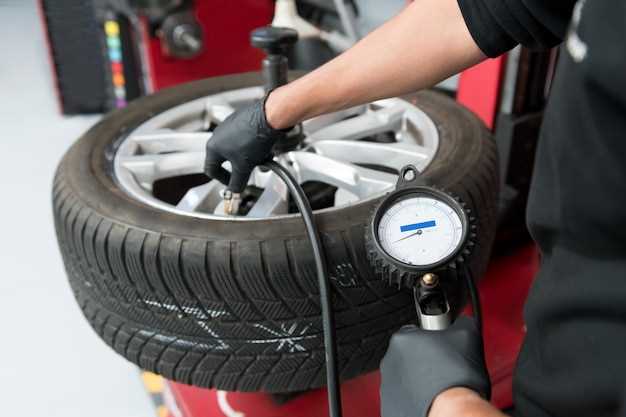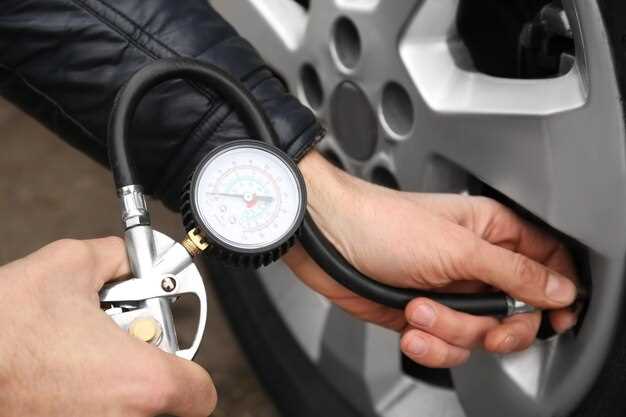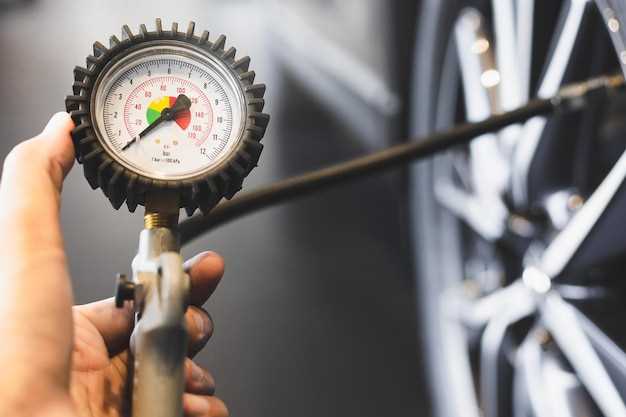
Maintaining optimal tire pressure is crucial for ensuring not only the overall performance of a vehicle but also the safety of its occupants. Properly inflated tires significantly influence how a vehicle handles, providing the driver with better control and responsiveness. When tire pressure deviates from the recommended levels, it can lead to a variety of issues that compromise both driving experience and safety.
Underinflated tires can cause poor handling, which affects steering precision and stability while driving. This lack of control can be particularly dangerous in adverse weather conditions or during emergency maneuvers. Conversely, overinflated tires can lead to a harsh ride, reduced traction, and uneven wear, further compromising vehicle performance and safety. Understanding the critical relationship between tire pressure and handling is essential for any driver who values both performance and safety on the road.
Regularly checking and adjusting tire pressure not only enhances vehicle handling but also promotes fuel efficiency and extends tire lifespan. In a world where safety and resource management are more important than ever, ensuring that your tires are properly inflated is a simple yet effective way to improve overall vehicle performance and maintain safety for all road users.
The Impact of Tire Pressure on Vehicle Performance and Safety
Tire pressure plays a crucial role in both vehicle performance and safety. Maintaining the correct tire pressure is essential for optimal handling, fuel efficiency, and overall driving experience.
Improper tire pressure can lead to several performance issues:
- Underinflation: Tires that are not inflated to the manufacturer’s recommended pressure can cause increased tire deformation. This leads to a larger contact patch with the road, resulting in poor handling and reduced steering responsiveness.
- Overinflation: Conversely, overinflated tires can lead to a smaller contact area, which may compromise traction and stability. This can also result in a harsher ride, as less rubber is in contact with the surface.
Handling characteristics are directly influenced by tire pressure:
- A properly inflated tire improves cornering stability and allows for better grip during turns, helping to prevent skids and loss of control.
- Correct tire pressure also contributes to even tire wear, enhancing performance over time and maintaining consistent handling capabilities.
Beyond performance, tire pressure significantly affects safety:
- Incorrect tire pressure can lead to tire blowouts, which pose serious risks while driving. Underinflated tires are particularly prone to overheating and failure.
- Maintaining the correct pressure ensures optimal braking performance. Flat or underinflated tires can increase stopping distances, endangering both the driver and other road users.
Regularly checking and adjusting tire pressure is a simple yet effective way to enhance vehicle performance and safety. Drivers should refer to their vehicle’s manual for the recommended pressure levels and inspect tires at least once a month, as well as before long trips.
Understanding Recommended Tire Pressure Levels

Maintaining the recommended tire pressure levels is crucial for optimal vehicle performance and safety. Proper pressure enhances handling, provides better fuel efficiency, and ensures even tire wear. Each vehicle manufacturer specifies a recommended tire pressure, typically found on a placard located on the driver’s side door jamb or in the owner’s manual. These recommendations take into account the vehicle’s design, weight, and intended use.
Underinflated tires can lead to decreased handling responsiveness, increased stopping distances, and a higher risk of blowouts. Conversely, overinflated tires can result in a harsher ride, reduced traction, and uneven wear. Thus, adhering to the recommended pressure not only contributes to handling stability but also significantly impacts driver and passenger safety.
The recommended tire pressures vary depending on the type of vehicle and the tires being used. The following table illustrates common recommended pressure levels for different vehicle categories:
| Vehicle Type | Recommended Tire Pressure (psi) |
|---|---|
| Passenger Cars | 30-35 |
| SUVs | 32-40 |
| Light Trucks | 30-35 |
| Performance Cars | 32-36 |
| Heavy-Duty Trucks | 60-80 |
Regularly checking your tire pressure, especially before long trips or changes in temperature, is essential to maintain the handling performance of your vehicle. Temperature changes can cause fluctuations in tire pressure; typically, for every 10-degree Fahrenheit change in ambient temperature, tire pressure can vary by about 1 psi. Thus, proactive monitoring is key to ensuring both performance and safety. By following these guidelines and ensuring your tires are inflated to the recommended levels, you enhance your vehicle’s handling and overall driving experience.
Consequences of Low Tire Pressure on Handling

Low tire pressure significantly affects vehicle handling, leading to a variety of adverse consequences. When tire pressure is below the recommended level, tires become softer, which reduces their ability to maintain proper contact with the road surface. This diminished contact can result in decreased steering responsiveness and compromised cornering stability.
With lower pressure, tires tend to flex more than usual during turns, creating excessive sidewall deformation. This flexing leads to a lag in the vehicle’s response to steering inputs, making it harder for drivers to maneuver effectively. As a result, the vehicle may feel sluggish or unresponsive, increasing the risk of losing control, especially during high-speed driving or emergency situations.
Additionally, tires with insufficient pressure can cause uneven wear patterns, leading to reduced grip and further compromising handling performance. This uneven wear can result in a noteworthy difference in traction between tires, which may cause the vehicle to pull to one side when driving straight. This not only affects comfort but also poses serious safety risks.
Moreover, low tire pressure increases the likelihood of tire overheating, which can lead to blowouts. Inadequate pressure contributes to higher rolling resistance, requiring the engine to exert more effort for the same speed. This inefficiency not only affects overall vehicle performance but also increases fuel consumption.
In summary, maintaining optimal tire pressure is crucial for ensuring effective handling, maximizing grip, and enhancing overall safety. Regular checks and proper maintenance of tire pressure can prevent these detrimental consequences and ensure a safe driving experience.
Effects of High Tire Pressure on Vehicle Stability
High tire pressure can significantly compromise vehicle stability, leading to various performance issues. When tires are overinflated, they become rigid and less able to conform to road surfaces. This rigidity decreases the contact area between the tire and the road, resulting in reduced traction. Adequate traction is essential for maintaining control during cornering and sudden maneuvers.
The handling characteristics of a vehicle are also adversely affected by high tire pressure. While some might assume that a firmer tire improves responsiveness, the reality is that overinflated tires can cause the vehicle to feel skittish. This sensation often leads to a lack of confidence for the driver, particularly when navigating turns or driving on uneven surfaces. The reduced feedback from the road can make it difficult to gauge the vehicle’s limits, increasing the likelihood of oversteering or understeering.
Additionally, high tire pressure affects braking performance. When tires are overinflated, they may lead to longer stopping distances due to decreased contact with the pavement. In emergency situations, this can be a critical factor affecting safety. The diminished grip can result in the inability to execute timely stops, increasing the risk of collisions.
Moreover, high tire pressure can accelerate tire wear, particularly in the center of the tread. Uneven wear patterns can further impair handling characteristics and safety, making it essential for drivers to regularly monitor and maintain appropriate tire pressure levels. Overall, ensuring that tire pressure is within manufacturer specifications is vital for optimal vehicle stability and safe driving experiences.
How Tire Pressure Influences Fuel Efficiency
Tire pressure plays a crucial role in determining a vehicle’s fuel efficiency. When tires are underinflated, they create more rolling resistance, meaning the engine must work harder to propel the vehicle forward. This increased workload leads to higher fuel consumption. Conversely, properly inflated tires reduce rolling resistance, allowing for smoother movement and efficient energy use.
Additionally, maintaining the correct pressure enhances the vehicle’s handling characteristics. Overinflated tires can lead to a harsher ride and diminished traction, while underinflated tires can cause excessive flexing and drag. Both scenarios can negatively impact fuel efficiency, making attention to tire pressure essential for optimal performance.
Regularly checking and adjusting tire pressure not only contributes to better fuel economy but also prolongs tire life, providing a significant benefit over time. Keeping tires at manufacturer-recommended pressure levels ensures a balance between fuel efficiency, safety, and performance, ultimately offering a more economical driving experience.
Identifying Signs of Improper Tire Pressure
Maintaining the correct tire pressure is crucial for optimal vehicle performance and safety. Improper tire pressure can lead to various handling issues and increase the risks associated with driving. Here are some key indicators that may suggest your tires are not inflated to the recommended pressure.
- Visual Inspection: Look for visible signs of tire deflation. A tire that appears flat or sagging indicates low pressure, while a bubbling or bulging sidewall may suggest over-inflation.
- Handling Issues: If you notice a change in how your vehicle responds while driving, it could be due to incorrect tire pressure. Symptoms include:
- Poor steering response
- Excessive sway or bounce
- Difficulty maintaining straight paths
- Tire Wear Patterns: Uneven tire wear can indicate improper pressure. Check for:
- Excess wear on the edges (possibly under-inflated)
- Centrally worn tread (likely over-inflated)
- Feathering, which may denote misalignment or improper inflation
- Temperature Changes: A significant difference in tire temperature can reveal pressure issues. Tires that are running hotter than normal may be over-inflated, while those that are cooler may be under-inflated.
- Fuel Efficiency: Noticeable decreases in fuel efficiency can be caused by improper tire pressure. Under-inflated tires create more rolling resistance, leading to decreased mileage.
- Warning Lights: Some modern vehicles are equipped with Tire Pressure Monitoring Systems (TPMS) that will alert you to low tire pressure. Pay attention to these warnings and take immediate action when necessary.
Regular tire pressure checks and understanding these signs can help prevent accidents, enhance handling, and improve overall driving comfort. Always refer to the vehicle’s manual for the manufacturer’s recommended pressure levels.
Best Practices for Maintaining Optimal Tire Pressure
Maintaining optimal tire pressure is crucial for ensuring vehicle performance and safety. Regularly checking and adjusting tire pressure can enhance handling, improve fuel efficiency, and prolong tire life.
Start by referring to the manufacturer’s recommendations, usually found in the vehicle’s owner manual or on a sticker located inside the driver’s door. This information provides the ideal pressure level for both front and rear tires, taking into account load and driving conditions.
Use a reliable tire pressure gauge to measure your tire pressure. It’s best to check the pressure when tires are cold, as heat generated from driving can increase pressure readings. Regular checks should be done at least once a month and before long trips to ensure all tires are inflated to the recommended level.
Be aware of seasonal changes, as temperature fluctuations can impact tire pressure. As a general rule, tire pressure decreases by approximately 1 PSI for every 10°F drop in temperature. Adjust tire pressure accordingly, especially during transitions between seasons.
Don’t forget to check the spare tire as well. Many drivers overlook this important aspect, but maintaining proper pressure in the spare can be crucial in case of an emergency.
If you find that your tires consistently lose pressure, inspect for leaks or punctures. Addressing these issues promptly can prevent further complications and ensure optimal handling and safety on the road.
Finally, consider regular tire rotations and alignments as part of your maintenance routine. Well-maintained tires contribute to better handling and can directly affect your vehicle’s overall performance. Keeping an eye on tire pressure is a simple yet effective way to promote a safer driving experience.
